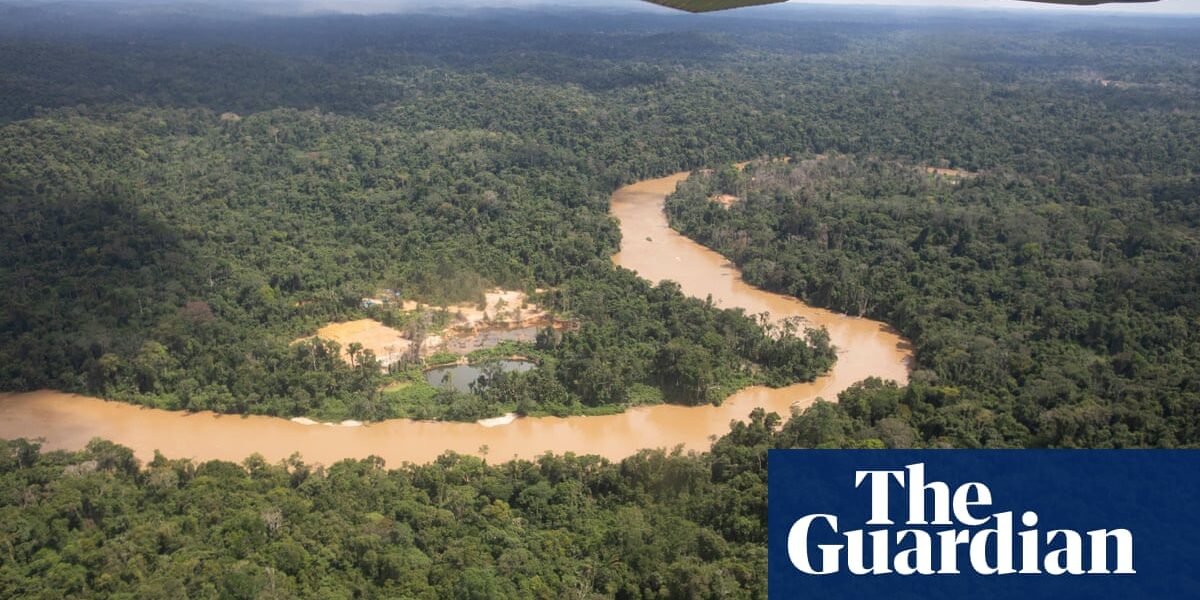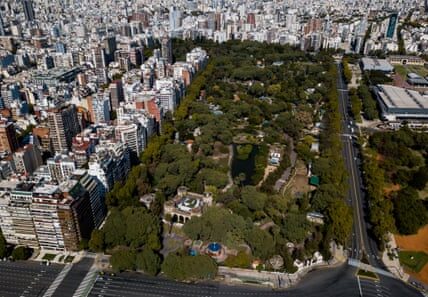Scientists warn that by 2050, the Amazon rainforest may reach a critical point where it cannot recover. This warning serves as a reminder of the urgency to protect and preserve this crucial ecosystem.

A recent study has revealed that as a result of factors such as water scarcity, deforestation, and climate change, up to 50% of the Amazon rainforest may reach a critical point by 2050.
The research, considered the most thorough to date in examining the combined effects of human actions on a local level and the worldwide issue of climate change, cautioned that the forest has exceeded a safe limit and called for measures to rehabilitate damaged areas and strengthen the ecosystem’s ability to cope.
Bernardo Flores, the primary researcher from the Federal University of Santa Catarina in Brazil, expressed his astonishment at the findings of the study. These findings suggest a possible transition from gradual to swift deterioration of forests, occurring sooner than initially anticipated.
According to him, the forest is already experiencing a decline in strength and diversity. He also warned that by 2050, this decline will progress at a faster pace. It is crucial to take action immediately as once the tipping point is reached, we will have no control over the forest’s behavior.
2
International action is necessary as solely stopping deforestation in one specific area would not be enough to prevent a collapse, unless there is a worldwide decrease in CO2 emissions.2
Pollutants that are causing disturbance to the Earth’s climate.
For 65 million years, the Amazon rainforests have endured changes in weather patterns, but currently face unprecedented challenges such as drought, high temperatures, wildfires, and deforestation. These issues are even affecting the previously untouched central regions of the forest. As a result, the forest’s functioning has changed, leading to decreased rainfall in many areas and transforming it from a carbon absorber to a carbon releaser.
The topic of an Amazon tipping point has been a topic of discussion for the last twenty years. Previous studies have suggested that this tipping point could occur when 20% to 25% of the forest is destroyed. However, a new study published in Nature on Wednesday delved deeper, examining evidence related to five factors that contribute to water stress. The study also identified crucial thresholds that, if exceeded, could lead to the collapse of local, regional, or even the entire Amazon biome.
It is predicted that between 2050, 10% to 47% of the forests in the Amazon will experience multiple disturbances, potentially leading to sudden shifts in the entire ecosystem and negative impacts on local climate change.
The study has determined that in order to prevent this issue, establishing a secure boundary with a buffer zone is necessary. This will help limit deforestation to 10% of the Amazon region and maintain global heating at a maximum of 1.5C above pre-industrial levels.
However, overexploitation has already occurred. According to the research, 15% of the Amazon rainforest has been deforested and an additional 17% has been damaged due to human actions like logging, fires, and extraction. The prolonged droughts in the past ten years may also have a negative impact on 38% of the Amazon.
Based on current data from on-site research, indirect indicators of past patterns, and computer simulations that consider both local and worldwide climate patterns, the research examined three potential paths for the ecosystem: a savanna with white sand, a damaged area with sparse tree cover, and a damaged forest – all of which would lead to increased instances of fire and dryness.
In central and southern areas of the Amazon, the temperature during the dry season has risen by 2 degrees Celsius compared to 40 years ago. According to models, by 2050 there could be 10 to 30 additional dry days and an increase in maximum temperatures by 2 to 4 degrees Celsius. The study suggests that this could lead to extreme heat that may be too much for the forest and its inhabitants to handle, potentially causing a decline in forest productivity and carbon storage capacity.
The way rain falls is changing. Over the past few decades, certain areas of the Amazon rainforest have become less wet. In the southern part of Bolivia’s Amazon, the yearly rainfall has decreased by about 20mm. However, in the western and eastern regions of the Amazon, there has been an increase in rainfall. According to the study, if these patterns continue, the resilience of the ecosystem will be altered. Some areas may turn into savannas, while the majority of the Amazon is expected to remain in a damaged state.
2 emissions.
This will greatly affect the nearby communities and surrounding areas. The Amazon houses over 10% of the world’s land-based biodiversity, and can store carbon dioxide emissions equivalent to 15-20 years of global output.2
The release of pollutants, known as emissions, is responsible for approximately half of the rainfall in the area and is essential for providing moisture to South America. The process of evapotranspiration from this region also plays a role in regulating and cooling the Earth’s climate. However, the significance and intricacies of this phenomenon are not yet fully comprehended.
2 added to the atmosphere by
The research highlighted that current computer simulations of climate patterns do not sufficiently consider the combined impact of various disturbances like fire, drought, and deforestation, nor do they account for the varying effects on different types of forests. Additionally, these models do not factor in the potential consequences of proposed infrastructure developments, such as the BR319 highway that may lead to increased illegal mining and land seizures. Moreover, the role of forest degradation in the process of rain recycling and the influence of additional CO2 emissions on the atmosphere were not taken into consideration.2
Changes in the atmosphere can either enhance or diminish the resilience of forests.
Existing models with limited complexity can result in unexpected events, as seen in the catastrophic drought of last year. Flores cautions that the rapid pace of recent occurrences, like El Niño, highlights the urgency to act. A cautious stance is necessary, as we may need to anticipate earlier than expected events. It is crucial to strive for net zero emissions and deforestation as soon as possible. This must be prioritized now before the loss of the Amazon becomes a significant issue for humanity.
Source: theguardian.com



